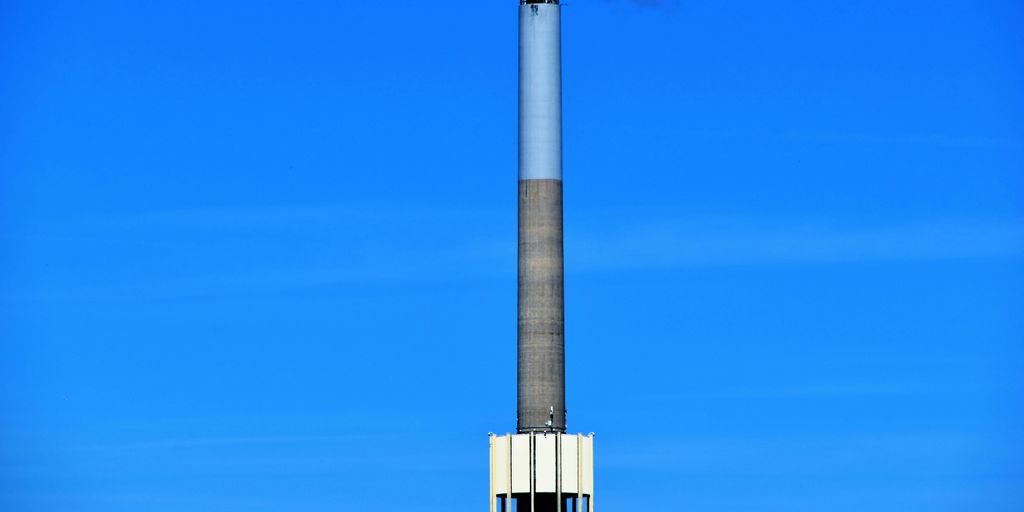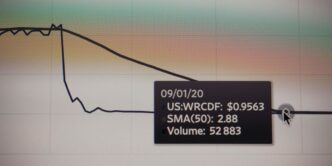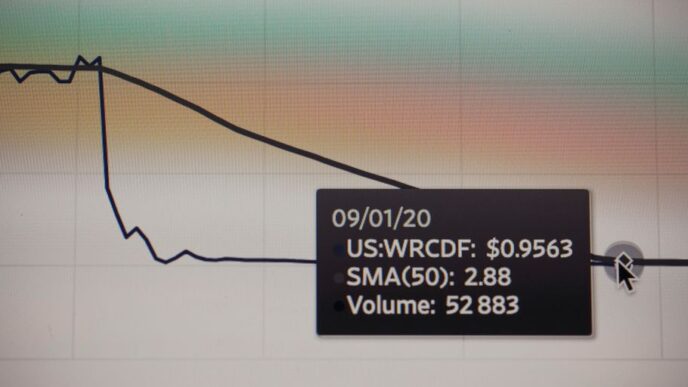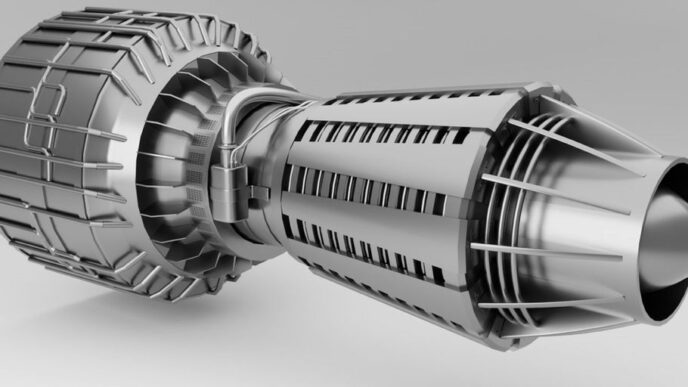China’s space program has been making big moves, and one of the most exciting things happening is the Long March-9 rocket. This isn’t just any rocket; it’s a super-heavy carrier that could totally change how we explore space. Think about it: a rocket so powerful it can carry massive loads to the Moon and beyond. It’s a huge step for China, putting them right up there with the big players in space. The Long March-9 is a game-changer, plain and simple.
Key Takeaways
- The Long March-9 is China’s new super-heavy rocket, built to take on big space missions.
- It’s designed to carry a lot of stuff, way more than older rockets, making lunar and Mars trips easier.
- China wants the Long March-9 to be reusable, which could save a lot of money and be better for the environment.
- The Long March-9 is often compared to SpaceX’s Starship, showing both countries are aiming for similar big goals in space.
- This rocket is key for China’s plans, like sending people to the Moon and building research stations there, showing they want to be a top space power.
The Long March-9: China’s Next Giant Leap in Space Exploration
China is making big moves in space, and the Long March-9 rocket is a huge part of that. It’s not just another rocket; it’s a statement about China’s ambitions to become a major player in space exploration. Think of it as their version of a super-heavy lifter, designed to tackle missions that are currently out of reach. It’s a really big deal.
Unveiling China’s Super-Heavy Ambitions
China isn’t shy about its goals. They want to send bigger payloads farther than ever before, and the Long March-9 is how they plan to do it. This rocket is designed to carry massive amounts of cargo to the Moon, Mars, and beyond. It’s a sign that China is serious about long-term space endeavors, not just short trips. The Long March-9 is expected to carry payloads of up to 150,000 kg to Low Earth Orbit (LEO).
The Long March Family Legacy
The Long March-9 isn’t coming out of nowhere. It’s part of a family of rockets that have been evolving for decades. The Long March 5, for example, has been used in important missions like the Chang’e-5 lunar mission and the Tianwen-1 Mars mission. The Long March family has a history of successful launches, with the Long March 8 being the 356th flight of the family. The Long March-9 is the next step in that evolution, building on past successes and pushing the boundaries of what’s possible.
A New Era of Space Exploration
The Long March-9 represents a shift in how China approaches space exploration. It’s not just about sending satellites into orbit; it’s about establishing a long-term presence in space. This rocket will enable crewed lunar missions, deep-space exploration, and even the construction of space-based infrastructure. It’s a new era, and China wants to be at the forefront. China anticipates needing about 10 Long March-9 rockets each year from 2030 to 2035 to meet the country’s demand for heavy-lift rockets.
Engineering the Future: The Long March-9’s Design
The Long March-9 isn’t just about size; it’s about smart engineering. China is pushing the boundaries of rocket technology to make this super-heavy lifter a reality. Let’s take a look at some of the key design elements.
Massive Payload Capacity
One of the main goals of the Long March-9 is its ability to carry huge payloads. The initial design aims for a Low Earth Orbit (LEO) capacity of 150,000 kg (that’s 165 tons!). It can also deliver 54,000 kg (59.5 tons) to trans-lunar injection. This kind of capacity opens up possibilities for large space stations, lunar bases, and deep-space missions. Meeting heavy-lift demands technology trends is a key factor in the design.
Propellant Tank Breakthroughs
Building a rocket this big requires some serious advancements in propellant tank technology. The China Academy of Launch Vehicle Technology (CALT) recently completed the first propellant tank for the Long March-9. These tanks need to be strong enough to hold massive amounts of fuel, yet lightweight enough to not weigh the rocket down. This is a major engineering accomplishment and lays the groundwork for future launch vehicles. The components for the 10-m propellant tank are a testament to this.
Powering Lunar and Martian Missions
The Long March-9 is designed with specific missions in mind, particularly lunar and Martian exploration. To achieve these ambitious goals, the rocket needs powerful engines. The current design includes a fully reusable first stage powered by 30 YF-215 engines. These engines use methane and liquid oxygen and each provides about 200 tons of thrust. This kind of power is essential for lifting heavy payloads beyond Earth’s orbit. The Long March 9 is a super-heavy rocket designed for ambitious space missions.
Reusability: A Game-Changer for the Long March-9
The Long March-9’s shift toward reusability marks a significant turning point in China’s space program. Originally conceived as an expendable rocket, the Long March-9 is now being developed with reusability in mind. This transition mirrors a global trend driven by both economic and environmental factors.
Transition to Reusable Technology
China’s move to reusable rocket technology is a big deal. It’s not just about keeping up with the Joneses (or, in this case, SpaceX); it’s about making space travel more affordable and sustainable. The Long March-8, for example, represents China’s initial foray into reusable stages, even though its first launch was in an expendable configuration. The ultimate goal is a fully reusable Long March-9, capable of significantly reducing launch costs.
Economic and Environmental Advantages
Reusability offers huge economic benefits. Instead of building a new rocket for every launch, key components can be recovered and reused, cutting down on manufacturing costs. This could bring the cost per kilogram to low Earth orbit (LEO) down considerably, potentially to somewhere between $1,500 and $2,500. Environmentally, reusability reduces waste and the resources needed for constant rocket production. This makes space missions more sustainable in the long run. The Long March series has come a long way.
Learning from Global Trends
China is definitely paying attention to what other spacefaring nations are doing, especially SpaceX. The "fail fast, learn fast" approach, while having some regulatory hurdles, has allowed SpaceX to rapidly improve its designs. China’s approach with the Long March-9 seems more gradual, but the end goal is the same: to create a reliable, reusable super-heavy launch vehicle. The SpaceX’s Starship is a good example of this trend.
Comparing the Long March-9 to SpaceX’s Starship
Shared Ambitions, Different Trajectories
Comparisons between the Long March-9 and SpaceX’s Starship are unavoidable. Both are super-heavy lift rockets with ambitious goals, but their approaches and timelines differ. Starship aims for full reusability from the start, while the Long March-9 is taking a more phased approach. The Long March 9’s initial design includes a reusable first stage, with full reusability planned for later versions. Starship is targeting a LEO capacity of 100-150 tons, while the Long March 9 aims for 150 tons. It’s a race to see who can achieve these milestones first.
Innovation and Development Philosophies
SpaceX has a "fail fast, learn fast" approach, rapidly iterating on designs and pushing boundaries. They’ve had delays, sure, but they keep moving forward. China’s Long March-9, on the other hand, is following a more gradual path. The first launch is expected around 2033, with a fully reusable version not until around 2040. SpaceX’s financial stability allows for extensive testing, which is a big advantage. SpaceX’s solvency isn’t dependent on Starship’s immediate success, giving them room to experiment.
The Race for Space Dominance
Both the Long March-9 and Starship represent a push for space dominance. The Long March 9 will have a fully reusable first stage powered by 30 YF-215 engines. Starship’s first stage is powered by 33 Raptor engines. The transition to reusable rockets is driven by economic and environmental factors. Reusability can drastically reduce the cost of space travel. The Long March series has been around since the early 1970s, showing China’s commitment to space. Much like SpaceX’s Starship, the Long March 9 aims to drive down mission costs through reusability.
Strategic Implications for China’s Space Program
The Long March-9 isn’t just about bigger rockets; it’s a key piece of China’s broader strategic ambitions in space. It’s about meeting growing needs, projecting power, and solidifying its position as a major player on the global stage. Let’s break down what this means.
Meeting Heavy-Lift Demands
China’s current launch capabilities are good, but they’re not enough for the really ambitious projects they have planned. The Long March-9 directly addresses this limitation. It provides the necessary lift capacity for deploying large space stations, sending heavy equipment to the Moon, and launching deep-space probes. This is a game-changer, allowing China to pursue projects that were previously out of reach. Think of it like upgrading from a pickup truck to a semi-trailer – suddenly, you can haul a whole lot more.
Supporting Lunar and Deep Space Missions
The Long March-9 is essential for China’s lunar ambitions, especially the International Lunar Research Station (ILRS). It will be used to transport habitats, rovers, and other critical infrastructure to the Moon. Beyond the Moon, the rocket will enable more ambitious deep-space missions, such as exploring Mars, studying asteroids, and potentially even searching for extraterrestrial life. These missions require heavy payloads and powerful launch vehicles, exactly what the Long March-9 is designed to provide. It’s about expanding China’s reach and influence throughout the solar system.
Asserting Spacefaring Superpower Status
Developing and deploying the Long March-9 sends a clear message: China is serious about space. It demonstrates technological prowess and a commitment to long-term space exploration. This has implications for China’s standing in the world, signaling its ability to compete with other spacefaring nations like the United States. It’s not just about science and exploration; it’s about national strategy and prestige. The Long March-9 is a symbol of China’s ambition and its determination to become a leading space power. The development of reusable rockets is a key part of this strategy.
The Long March-9’s Role in Lunar Exploration

The Long March-9 is absolutely vital for China’s lunar ambitions. It’s not just about getting there; it’s about building a sustained presence. The rocket’s heavy-lift capability is what makes all the difference. It will allow China to transport the massive amounts of equipment and supplies needed for a long-term lunar base. It’s a big deal.
Crewed Lunar Capabilities
China is serious about sending people to the Moon. The Long March-9 is expected to be the workhorse for these missions, delivering the necessary hardware and supplies. China has already tested a new spacecraft capable of transporting astronauts beyond low Earth orbit, showing a commitment to developing crewed lunar capabilities. The Chang’e-5 lunar sample return mission also tested technologies needed to get astronauts home from the moon. The Long March-9 will be essential for making these crewed missions a reality.
International Lunar Research Station
China is also talking about building an International Lunar Research Station (ILRS) with Russia. This station would be a place for scientists from all over the world to conduct research on the Moon. The Long March-9 would be used to send up the modules and equipment needed to build and maintain the ILRS. It’s a huge project, and the Long March-9 is key to making it happen. The Long March 9 will send up infrastructure and supplies.
Infrastructure for Long-Term Stays
To stay on the Moon for any length of time, you need infrastructure. We’re talking habitats, power generation, life support systems, and more. The Long March-9 is designed to carry these massive payloads to the lunar surface. Without it, long-term lunar stays just aren’t possible. It’s about more than just visiting; it’s about setting up shop. The Long March-5 has been used in the country’s Chang’e-5 lunar mission. The Long March-9 will be more than five times that of the Long March-5B.
Beyond the Moon: Future Missions and Aspirations

The Long March-9 isn’t just about getting to the Moon; it’s about what comes next. China has big plans for space, and this rocket is key to making them happen. It’s like building a superhighway to the stars, opening up possibilities we can only begin to imagine.
Deploying Space-Based Solar Power
One of the most ambitious goals is deploying space-based solar power. Imagine giant solar panels in orbit, collecting sunlight 24/7 and beaming clean energy back to Earth. It sounds like science fiction, but China is seriously exploring this. The Long March-9’s massive payload capacity would be essential for lifting the huge structures needed for such a project. It’s a long-term investment, but the potential payoff in clean energy is enormous.
Mars Exploration and Beyond
Mars is definitely on the agenda. While robotic missions like Tianwen-1 have already made strides, the Long March-9 could pave the way for crewed missions to the Red Planet. Getting humans to Mars requires a lot of resources – habitats, life support, return vehicles – and the Long March-9 could handle the heavy lifting. Plus, it could be used for missions to other destinations in the solar system, like exploring asteroids or even sending probes to the outer planets. It’s all about pushing the boundaries of what’s possible.
The Ultimate Objective: Fully Reusable Models
The holy grail of space travel is full reusability. Think of it like airplanes – you don’t throw them away after each flight. Reusable rockets would dramatically reduce the cost of space missions, making them more frequent and affordable. China is working towards this goal, and the Long March-9 is a step in that direction. The ultimate vision is a fully reusable rocket that can take off, deliver its payload, and land back on Earth, ready for its next mission. This would revolutionize space exploration and open up a whole new era of possibilities.
The Road Ahead for Long March-9
So, what’s next for the Long March-9? It’s pretty clear China is serious about space. This rocket, with its huge power and plans for reusability, is a big deal. It shows they want to do some really big things, like going to the Moon and maybe even Mars. There are still some hurdles, of course, like making sure it’s truly reusable and figuring out all the money stuff. But if they pull it off, the Long March-9 could totally change how we think about space travel, making it more common and maybe even cheaper. It’s going to be interesting to watch how it all plays out.
Frequently Asked Questions
What is the Long March-9 rocket?
The Long March-9 is China’s newest and biggest rocket. It’s built to carry really heavy stuff into space, like parts for future moon bases or even missions to Mars. Think of it as China’s super-strong space truck.
Why is the Long March-9 important for China’s space program?
This new rocket is a big deal because it can lift much more weight than China’s current rockets. This means they can send bigger and more complex things into space, which helps them explore the moon and other planets more easily.
Will the Long March-9 be reusable?
Yes, China plans for the Long March-9 to be reusable. This means parts of the rocket can land back on Earth after a launch and be used again. This makes space travel much cheaper and is a big step forward for China’s space efforts.
How will the Long March-9 help with moon missions?
The Long March-9 is designed to help China send astronauts to the moon and build a research station there. It will carry the heavy equipment and supplies needed for long stays on the lunar surface.
How does the Long March-9 compare to SpaceX’s Starship?
The Long March-9 is similar to SpaceX’s Starship because both are huge rockets meant to carry a lot of cargo and be reusable. However, they have different designs and are being developed on different timelines, with Starship aiming for full reusability sooner.
When is the Long March-9 expected to launch?
China hopes to launch the first Long March-9 rocket around 2033. They also have plans for even more advanced, fully reusable versions to fly in the 2040s.














